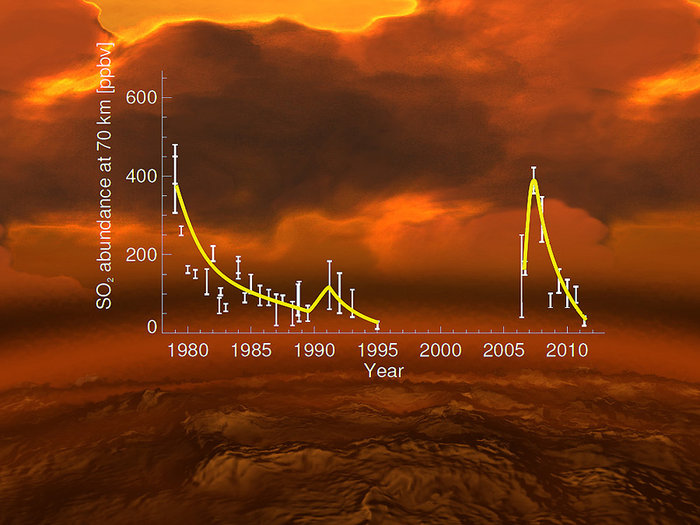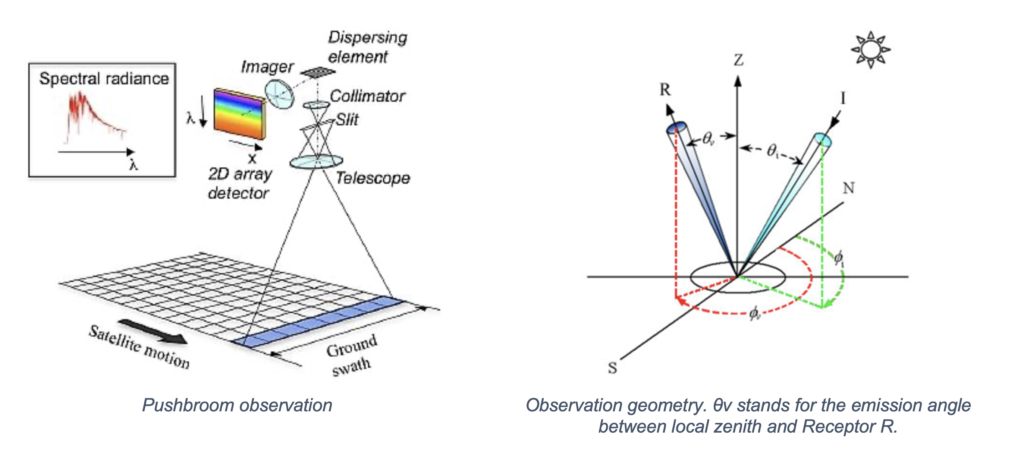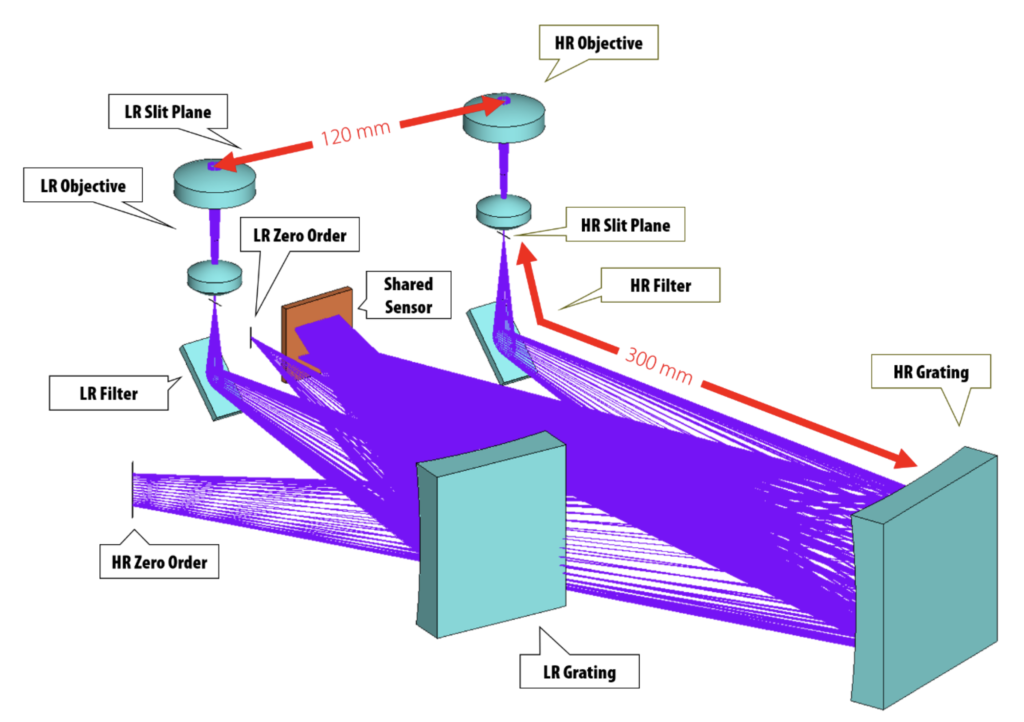VenSpec-U - EnVision
VenSpec-U
Instrument Lead Scientist (ILS): Emmanuel Marcq (LATMOS, IPSL, Guyancourt, France)
Rise and fall of sulphur dioxide in the upper atmosphere of Venus over the last 40 years, expressed in units of parts per billion by volume (ppbv).
In the above figure, the dataset on the left is mostly from NASA’s Pioneer Venus, which was in orbit around Venus from 1978 to 1992. The dataset on the right is from ESA’s Venus Express, which has been studying Venus since 2006. A clear rise in the concentration of sulphur dioxide (SO2) concentration was observed at the start of the mission, with a subsequent decrease. The increase in sulphur dioxide can be interpreted either as evidence for volcanic activity or for decadal-scale variations in the circulation of Venus’ vast atmosphere.
The VenSpec-U (also called VeSUV) project is part of the EnVision mission as a core element whose main scientific objectives are to:
- Search for atmospheric effects of geological activity, in order to determine how much outgassing is occurring, and how the atmospheric chemistry is coupled with surface/subsurface geochemistry and weathering cycles.
- Study how mesospheric gas variations are linked to volcanism, in order to identify the causes of variability in the mesospheric sulphured gases (SO, SO2).
- Study how cloud and particulate variability is linked to volcanism, in order to detect plumes of volcanic ash or sulphate clouds caused by volcanism, and to understand any link between the Venus sulphuric acid clouds and volcanism.
The VenSpec-U / VeSUV project is consequently dedicated to the monitoring of the cloud top abundances of volcanic sulphured gases (SO, SO2) as well as UV contrasts through spectral and spatial analysis of backscattered sunlight on the dayside of Venus.
VenSpec-U observations
Observations are based on a “pushbroom” observational strategy thanks to a UV imaging spectrometer operating in the 190 – 380 nm spectral range. Spectral resolutions shall be better than 0.2 nm in the 205 – 235 nm range (typical SNR of 100 or above at 220 nm), and better than 2 nm in the 190 – 380 nm range (typical SNR of 200 or above at 220 nm). Spatial sampling shall range from 5 km to 24 km (goal: 3 km), depending on spectral resolution and orbiter altitude. The narrow-slit axis of the detector contains the spectral information, whereas the long-slit axis contains the spatial information along the 20° field of view of each slit. The spectra of the LR and HR channels are dispersed one above the other on the focal plane. The remaining spatial direction is provided through orbital scrolling, an observational strategy known as pushbroom. Observations can be conducted in a strict nadir geometry (null emission angle), or in near-nadir geometry (emission angle <30°).
Instrument description
VenSpec-U is a dual-channel: low (spectral) resolution channel, hereafter the “LR” channel: 190-380 nm; and high (spectral) resolution channel, hereafter the “HR” channel: 205-235 nm.
Each channel consists of:
- An entrance baffle, used to limit the straylight coming from the Venus disk
- An objective composed of two lenses and a stop diaphragm
- A spectrometer mainly composed of a slit and a toroidal holographic grating. The spectrometer also comprises a short-pass filter to reject the wavelengths above the higher limit of the spectral bands of interest (> 240 nm for the HR channel, > 380 nm for the LR channel) and a zero-order trap used to avoid straylight due to internal reflexions of the zero-order of the gratings.
Both LR and HR slits are parallel and the optical layout is such that both channels have the same instantaneous field of view allowing simultaneous observations of the same target as well as simultaneous calibrations on the same star for both channels. Each slit image is then spectrally dispersed by its respective toroidal holographic grating and is formed on a shared CMOS back-side illuminated detector.
The detector package includes a Peltier element used to cool down and regulate the detector allowing low dark current and stable behaviour.
Binning on the spatial axis is performed on the detector, enabling a typical SNR at 220 nm above 100 for the HR channel and above 200 for the LR one (resulting in a coarser spatial resolution on the more dispersed HR channel).
The detector is controlled such that the integration time and the binning scheme is adjusted independently (and simultaneously) for each channel giving high flexibility and providing parameters for the optimisation of each acquisition (SNR vs. spatial resolution vs. altitude vs. …).
The instrument optical entrance is protected against high fluxes and contamination by a wheel mechanism that is open only during observations and closed the rest of time. This “light-tight” wheel is also used for dark measurements allowing mid/long-term dark current monitoring (ageing, radiation). Other wheel positions provide capabilities for in-flight calibration. This wheel is located between the baffle and the optical objective entrance. The general optical layout contains two separate entrance optics, each one dedicated to a channel.
A UV source (using UV LEDs) is used to perform in-flight flat-field monitoring as well as basic functional test and characterization of the detector.
VenSpec-U includes an electronic module in charge of the monitoring and control of the instrument.
As an UV instrument, VenSpec-U is sensitive to contamination. In addition to the adoption of a “cleanliness-oriented design”, several items are implemented to limit the degradation of the performances to an acceptable level.
- Removed a total of (2) style text-align:center;
- Removed a total of (2) style text-align:right;
- Removed a total of (3) style margin:0;








































 Sign in
Sign in
 Science & Technology
Science & Technology



